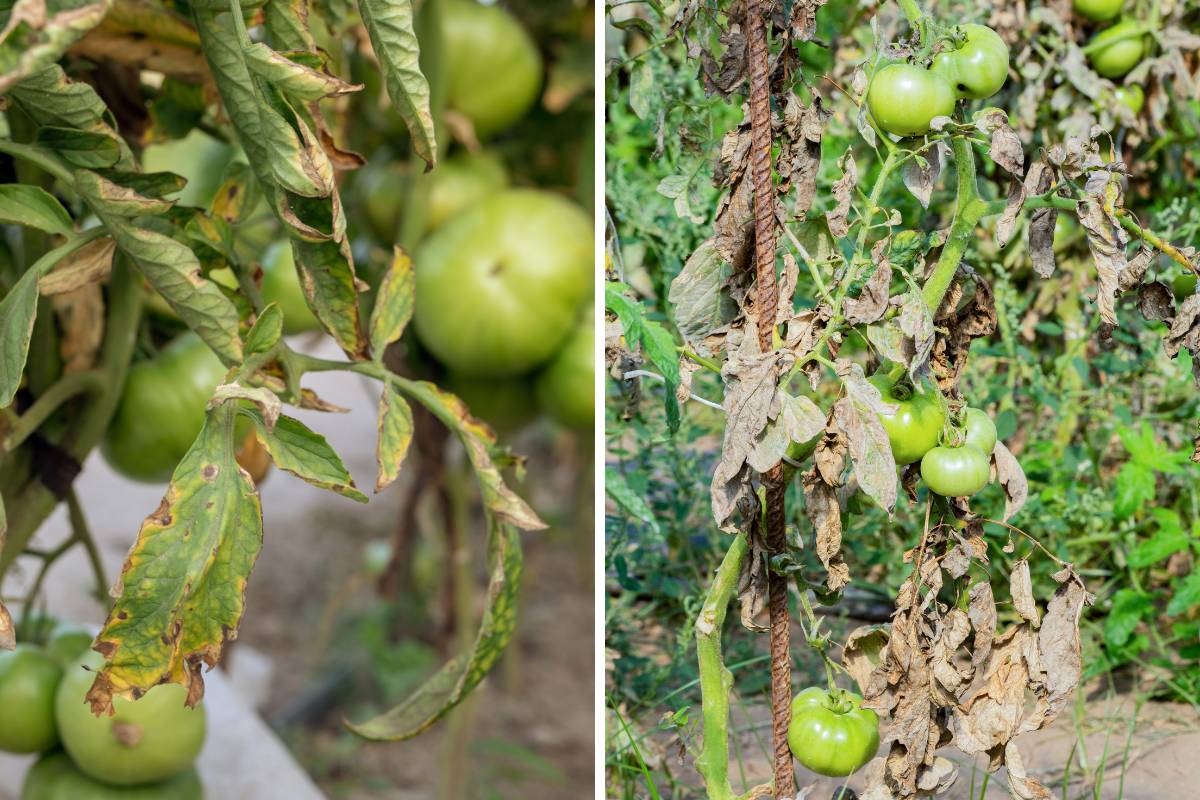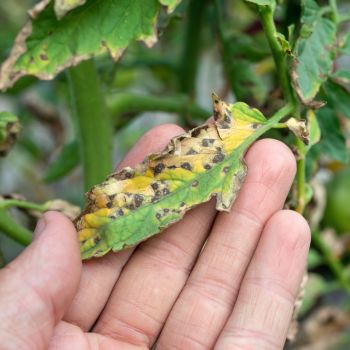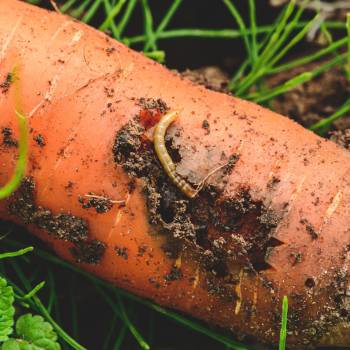In an ideal world, your tomato plants would move smoothly from seedling to a bountiful harvest of sweet, juicy fruits. While tomatoes are generally easy to grow, unfortunately this kitchen garden favourite is the target of many viral, bacterial and fungal infections that can stunt growth, reduce harvests, or even kill the plant entirely.
Spotting an infection before it spreads around your entire tomato patch can help you salvage a harvest, and one of the key areas to look for is discoloured or misshapen leaves. Our guide below will help you identify 10 of the most common diseases that appear in Australian tomato patches.
It's important to remember that not all yellowing or drooping tomato leaves are a reason to panic. The oldest, lower leaves on any tomato plant will often begin to look sad and yellow as they age. This is perfectly natural, as the plant directs its energy away from older leaves and into developing fruit and the healthy new leaves at its top.
Discoloured or damaged leaves can also be a sign of pests or nutritional deficiencies. If you can rule out infestations of aphids, caterpillars and other hungry intruders, and a good dose of tomato feed doesn't improve matters, then one of the following diseases could be the culprit.
Most of these diseases can spread rapidly from plant to plant, so while the problem might not be immediately fatal, it's best practice to completely remove plants affected by wilts and viruses as soon as you identify them.
1. Fusarium Wilt
A fusarium wilt infection might not be obvious until a tomato plant comes into flower, at which point the leaves will begin drooping and yellowing, starting at the base of the plant and moving inexorably upwards. Affected leaves will eventually turn brown and die, and once the browning spreads to the vines themselves the infection will be fatal for the entire plant. Fusarium wilt is transmitted in the soil, so crop rotation is crucial to stop its spread.
2. Verticillium Wilt
As with fusarium wilt, plants infected with verticillium wilt usually show no signs of disease until they're well established, when drooping will suddenly afflict the lower leaves before spreading upwards to eventually kill the plant. However, with verticillium wilt, yellowing of the leaves happens more slowly and may not be apparent before they die off. Like fusarium wilt, verticillium wilt is soil-borne, so crop rotation is essential to stop its spread.
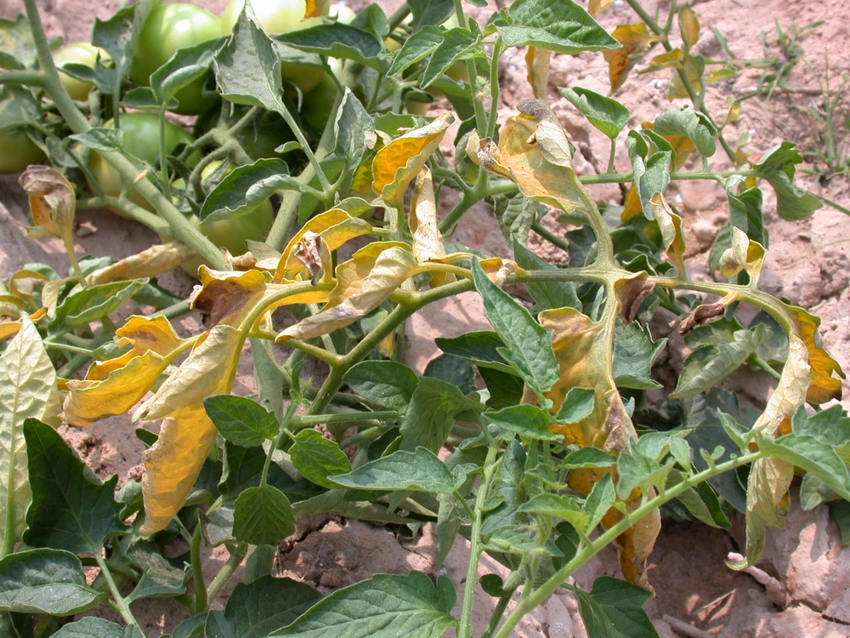
3. Bacterial Wilt
Bacterial wilt causes similar symptoms to underwatering, with drooping leaves appearing at the upper and outer parts of the plant, spreading downwards as the disease progresses. Often, the plant will die before any widespread spotting or browning appears.
4. Mosaic Virus
The leaves of tomato plants infected by mosaic virus develop mottled yellow and dark green areas, often accompanied by stunted growth, a rough texture, and twisting or curling at the tips. The virus is carried throughout the plant and affects all leaves. Infected fruits have sunken brown patches beneath the skin, making them unappetising although still safe to eat.
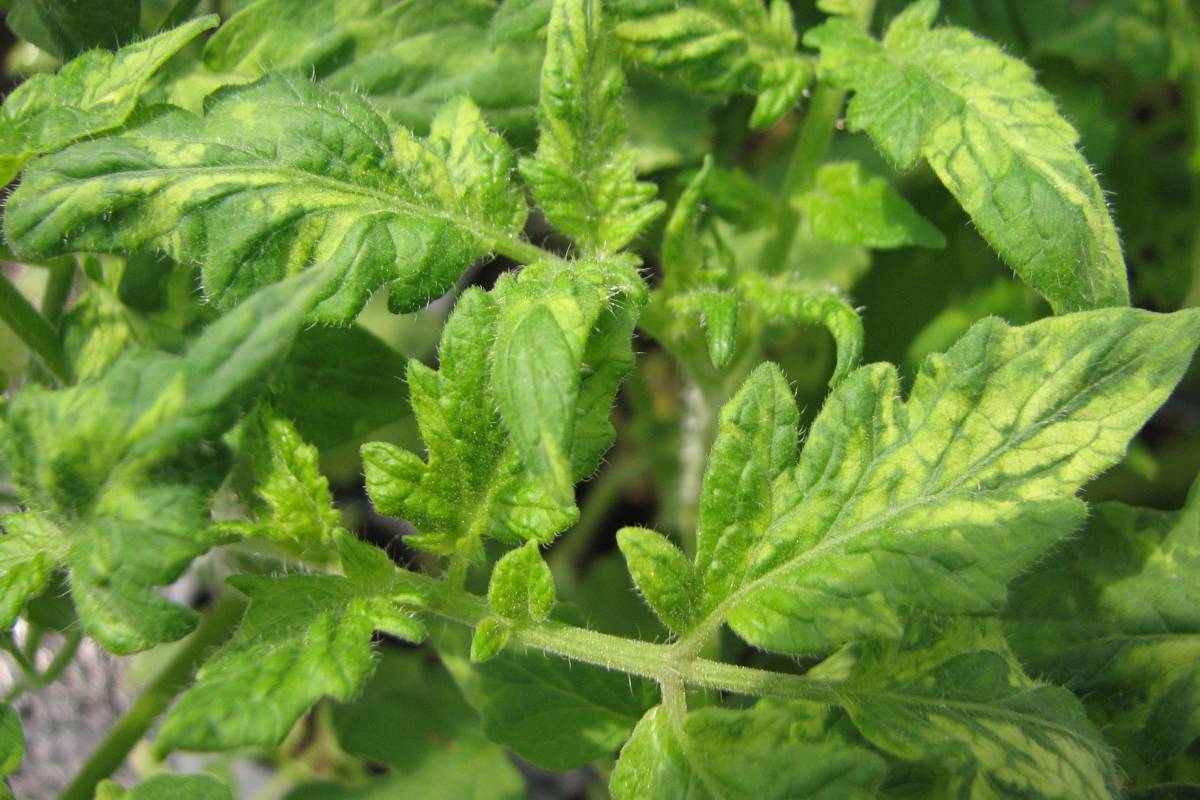
5. Leaf Curl Virus / Yellow Leaf Curl
As the name suggests, the yellow leaf curl virus turns leaves yellow and rolled in on themselves, also producing a thicker and more wrinkly texture in the foliage. Plants will be weakened with stunted growth, and any fruits that appear will be small and largely inedible.
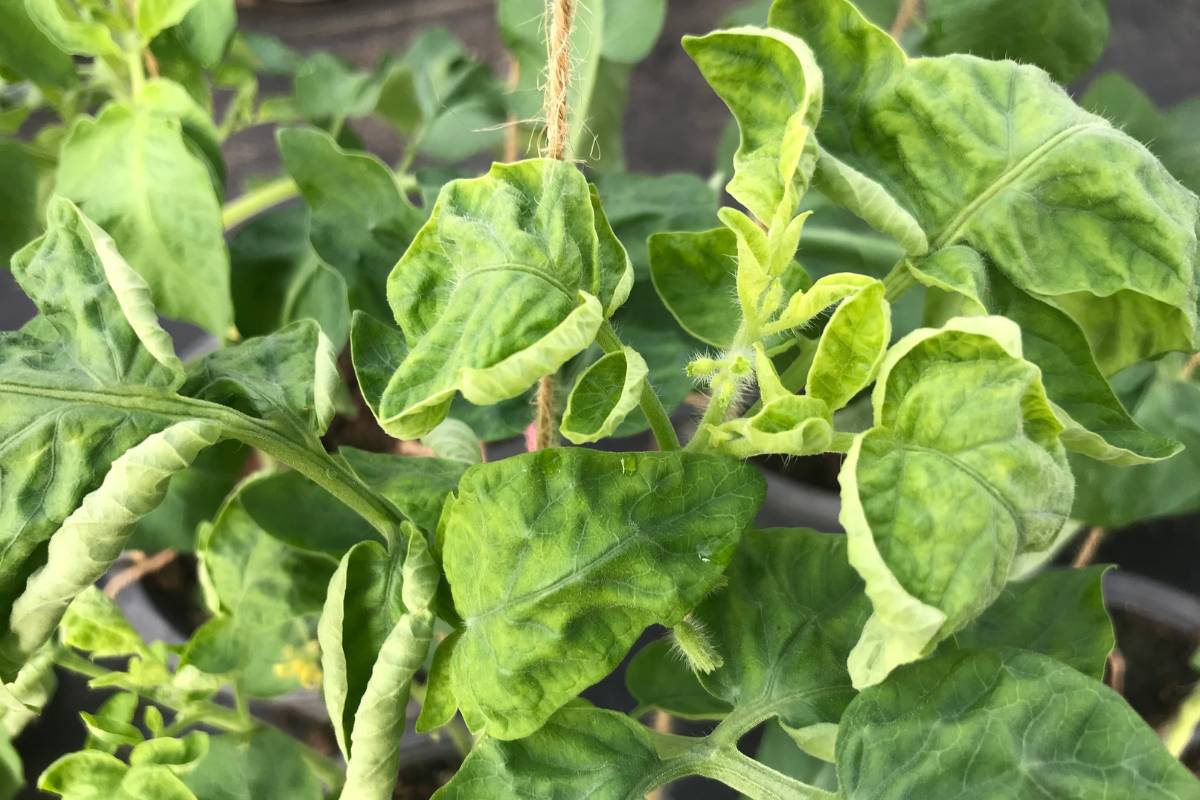
6. Tomato Spotted Leaf Virus (TSLV)
Plants infected with the tomato spotted leaf virus develop bronzing on the upper surface of young leaves, followed by dead black spots, tip dieback, and downward cupping. Fruits can also be affected, showing blackened spots on ripe fruits or uneven, blotchy colouring on immature ones. TSLV is transmitted by thrips and is a significant disease affecting Australian agricultural crops.
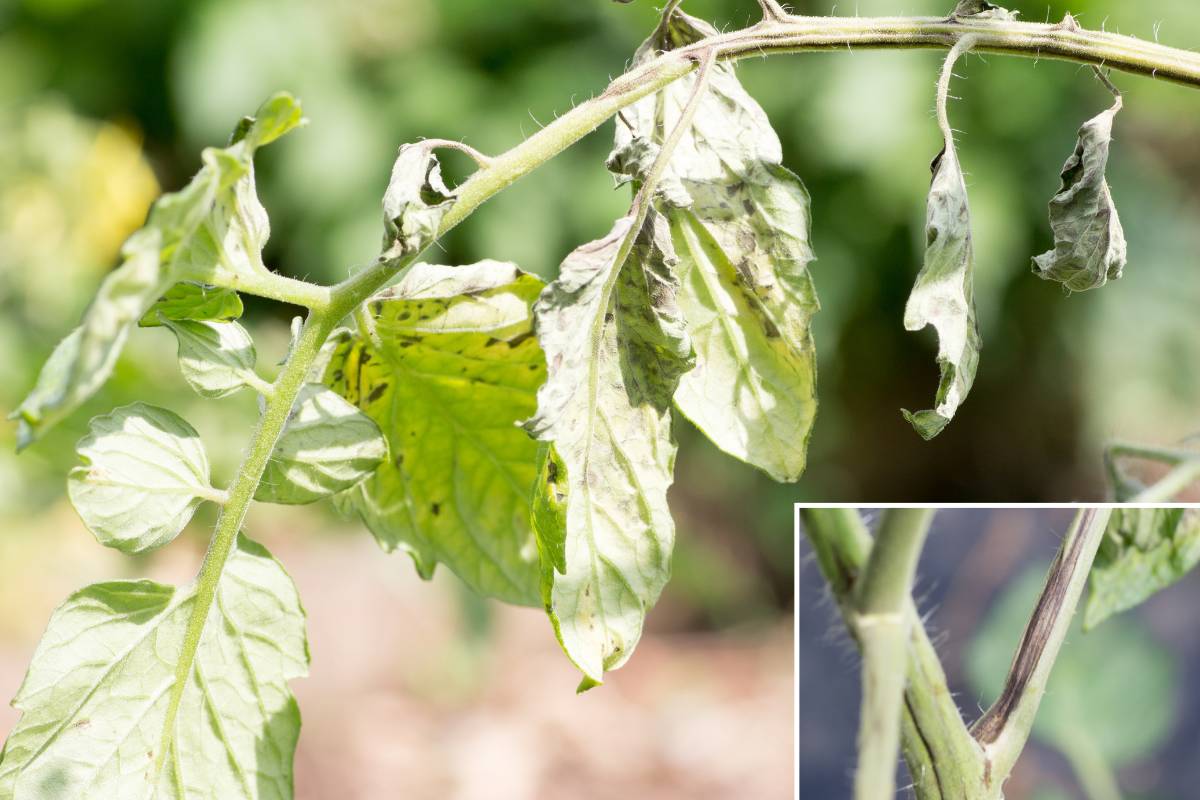
7. Powdery Mildew
Plants that have poor airflow in humid conditions are susceptible to powdery mildew, which shows up as patches of fine white powder on the upper surface of the leaves, with yellowing or brown spots beneath the mould. Eventually, the mildew will cover the entire leaf, killing it off, but any fruit the weakened plant produces will be unaffected.
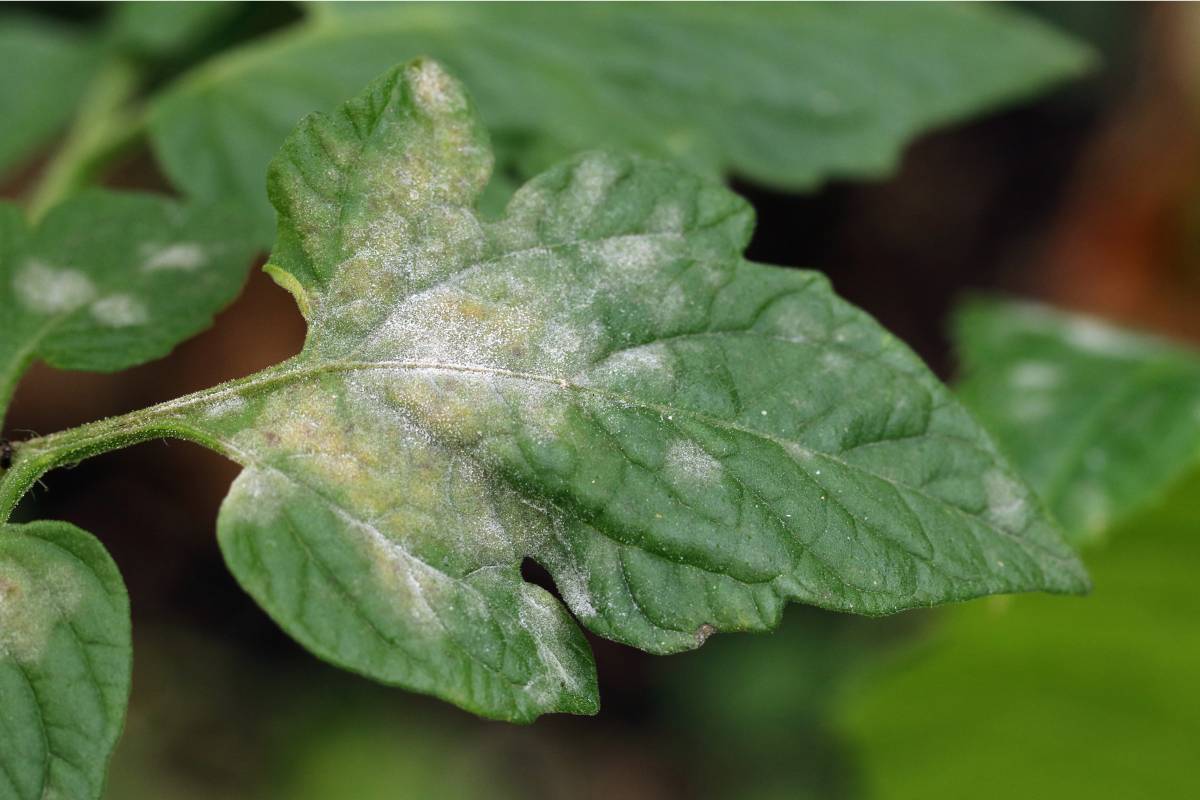
8. Early Blight
Early blight is a fungal disease that produces irregular patches on the lower leaves, often including a dark spot in the centre and yellowing around the edges. Afflicted plants will usually survive so long as the blight doesn't reach more than halfway up the stem.
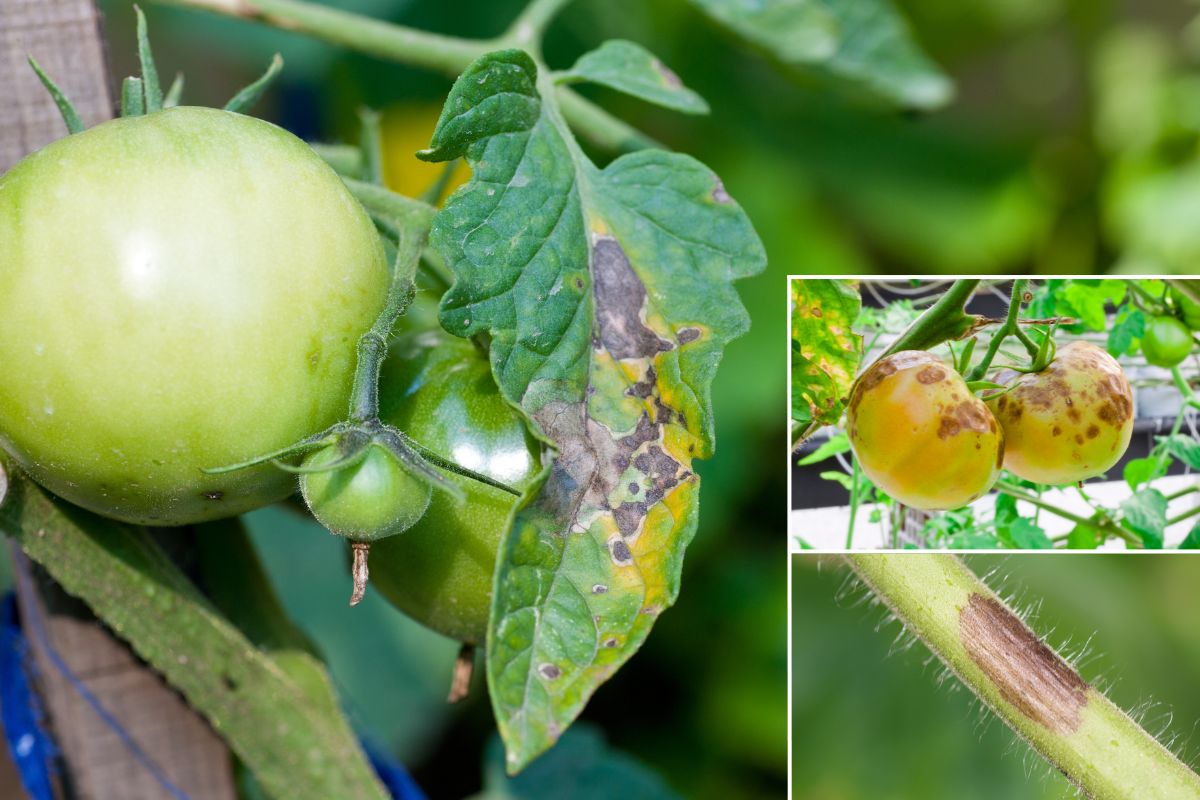
9. Target Spot
Target spot is a fungal disease characterised by small, slightly oval dark brown or black spots on the leaves, usually with a set of concentric rings around each spot. As the spots increase in number they can merge to kill most or all of the leaf. The fruits are also affected, usually with a dark spot near the stalk that starts to rot down one side and through to the centre.
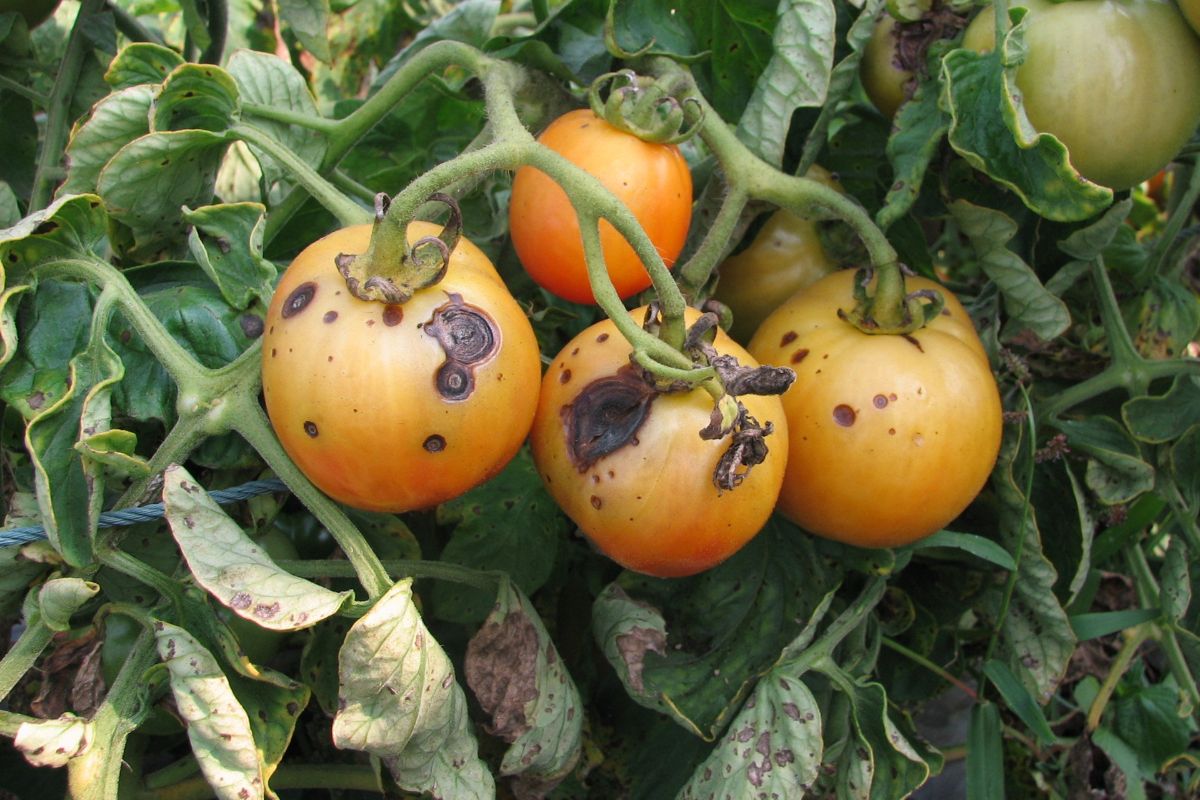
10. Septoria Leaf Spot
Septoria leaf spot is a fungal infection that typically appears in warm, wet weather, causing large numbers of small dark spots to appear on the leaves, particularly nearer the tips. In heavily infected plants, the spaces between the spots can turn yellow, with the entire leaf eventually turning brown and withering away. Infected plants may produce smaller fruits, although they will still be edible.
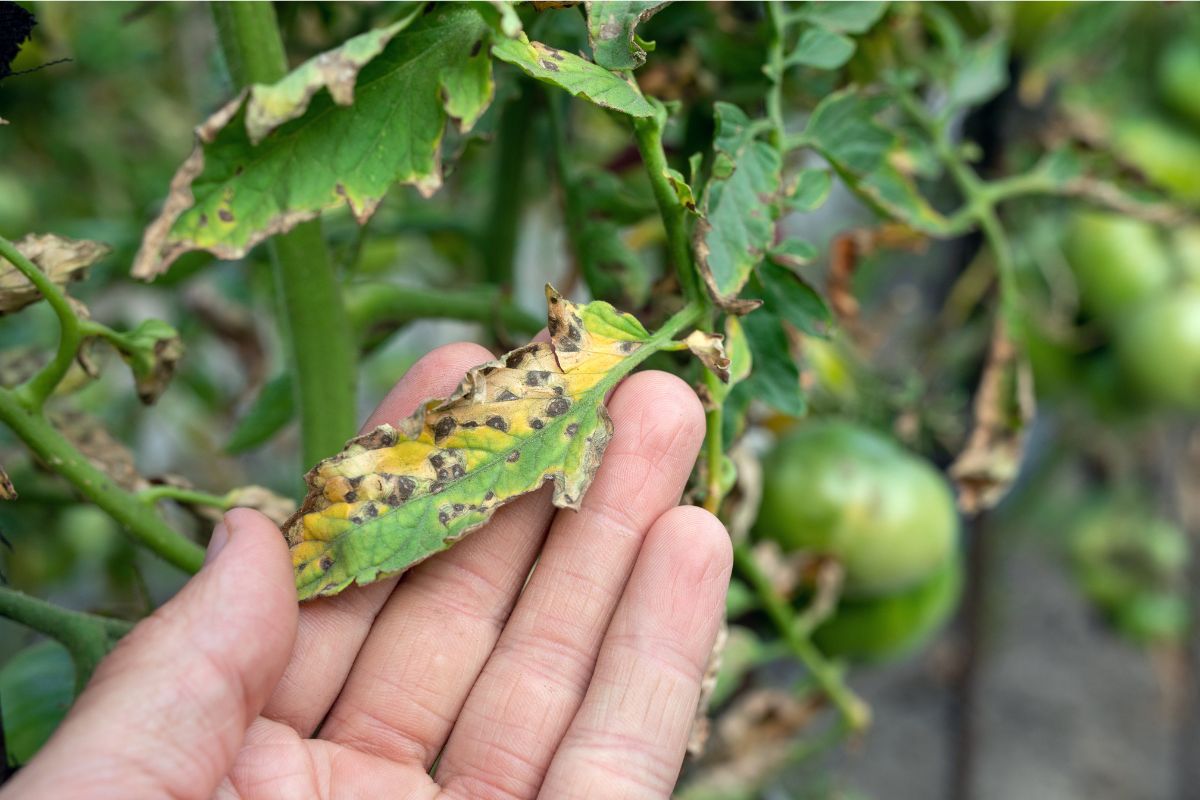
If your tomato plants are unhealthy but their symptoms don't match what's described above, our article on common tomato-growing problems may be helpful.
Recognizing the subtle cues of discoloration and misshapen leaves is your first line of defence when it comes to tomato diseases. Remember, not every wilted leaf is cause for alarm, but being armed with knowledge about tomato diseases means you can promptly address issues as they arise, protecting your precious tomato harvest.


